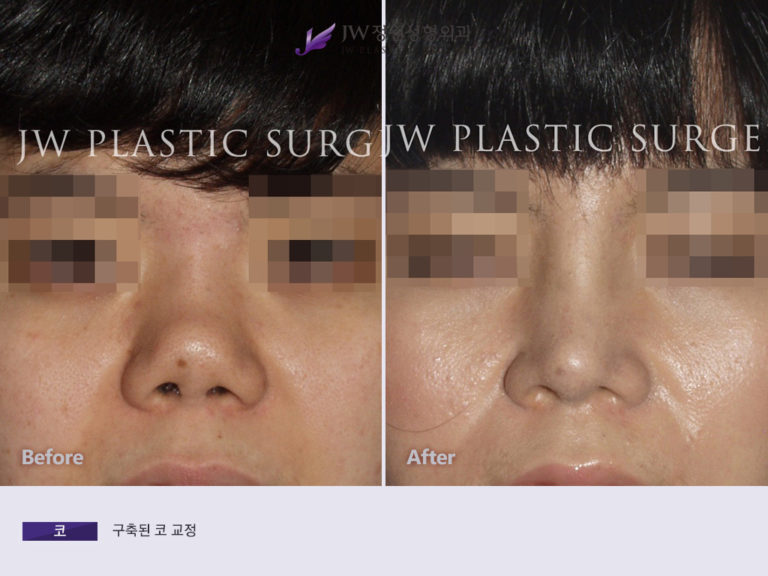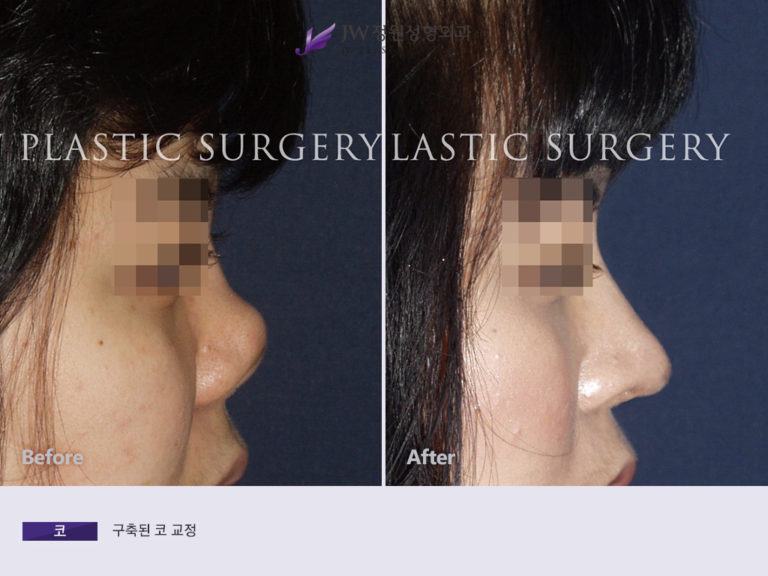If you have to choose one facial feature that brings all the aspects of the face in harmony, I can bet my bottom dollar that you’ll pick Nose! Not very surprisingly, statistics indicate the same. Did you know, that Nose job, or rhinoplasty is the second most commonly performed cosmetic procedure in Korea?
While there is no definition of how a perfect nose should be, there are certainly many ways you can spot one that isn’t aesthetically very pleasing and a contracted nose is definitely one of them.
What is a contracted nose?
A contracted nose is a slightly turned-up and stubby nose, often seen in Asian patients as a result of primary Rhinoplasty, in fact primary rhinoplasty gone wrong! How does this happen after a procedure that is meant to enhance the proportion and appearance of nose? Well, we’re here to tell you all about it!

Why does a nose contracture occur?
Nasal contracture manifests as a tightened and hardened nasal envelope (The skin, fat and muscle covering of nose) with the tip of the nose being affected the most. Apart from the hard and tight envelope, the tip of the nose is turned up giving the specific snub-nosed appearance. But, why does this contracture develop?
- Silicone implants (most common) used during the surgery may result in a contracted nose due to complications like;
- Infections.
- Capsular contraction around implant.
- Necrosis of lower cartilage due to long-term pressure from the implants.
- Multiple surgeries mainly because of dissatisfaction.

What is the solution now?
If you’re not satisfied with the results of your previous surgery, then a revision rhinoplasty is the ultimate solution to the problem. Even though the purpose of this follow-up surgery is the same as primary procedure, revision rhinoplasty is a lot more difficult and challenging than the former. This is precisely why the choice of a skilled and experienced surgeon plays the key role in the success of the surgery.
Revision Rhinoplasty is recommended when;
- The implant is slanted, shifted or transparent.
- The nose is inflamed.
- The nose has stubby appearance with an overall reduction in length.
- The implant is becomes very obvious.
In case of a snub nose, the procedure focuses on two principal constituents, first is the nasal envelope and second is the lower lateral cartilage. As a result of revision rhinoplasty;
- The scarred tissues that were glued together are released.
- Capsular tissues are separated.
- The cartilage of the nasal tip is pulled downwards and the length is increased.
During the procedure grafts are taken either from the septum or rib cartilage is used. At times when the nose retraction is severe, and skin envelope may not be sufficient to provide coverage to the new framework, a forehead flap may be used for tissue coverage


When is the right time?
While it varies from person to person and it’s generally advised to wait for the tissues to heal completely, it’s not necessary to prolong the wait to a year or more. Situations that demand an immediate correction or revision include;
- Infection (this could be devastating and may require immediate implant removal).
- Deviated implant.
- Excessive thinning of nasal skin.
- Tip of nose turning red.
Ideally revision rhinoplasty should be carried out within 1-2 weeks of the primary procedure, provided the facial tissues are healthy and the patient is not suffering from any life-threatening health issues. Otherwise, waiting for 6 months is recommended and at times a year as well. This provides nasal tissues with enough time to heal, soften and get ready for revision rhinoplasty. Nevertheless, the decision of going under the knife should always take in consideration;
- Prospects of improvement.
- Risk factors.
However, it is best to not take a decision in haste and undergo an unnecessary surgery. Again a knowledgeable and experienced surgeon would best be able to guide here. For more information, feel free to contact us to have a free online consultation.